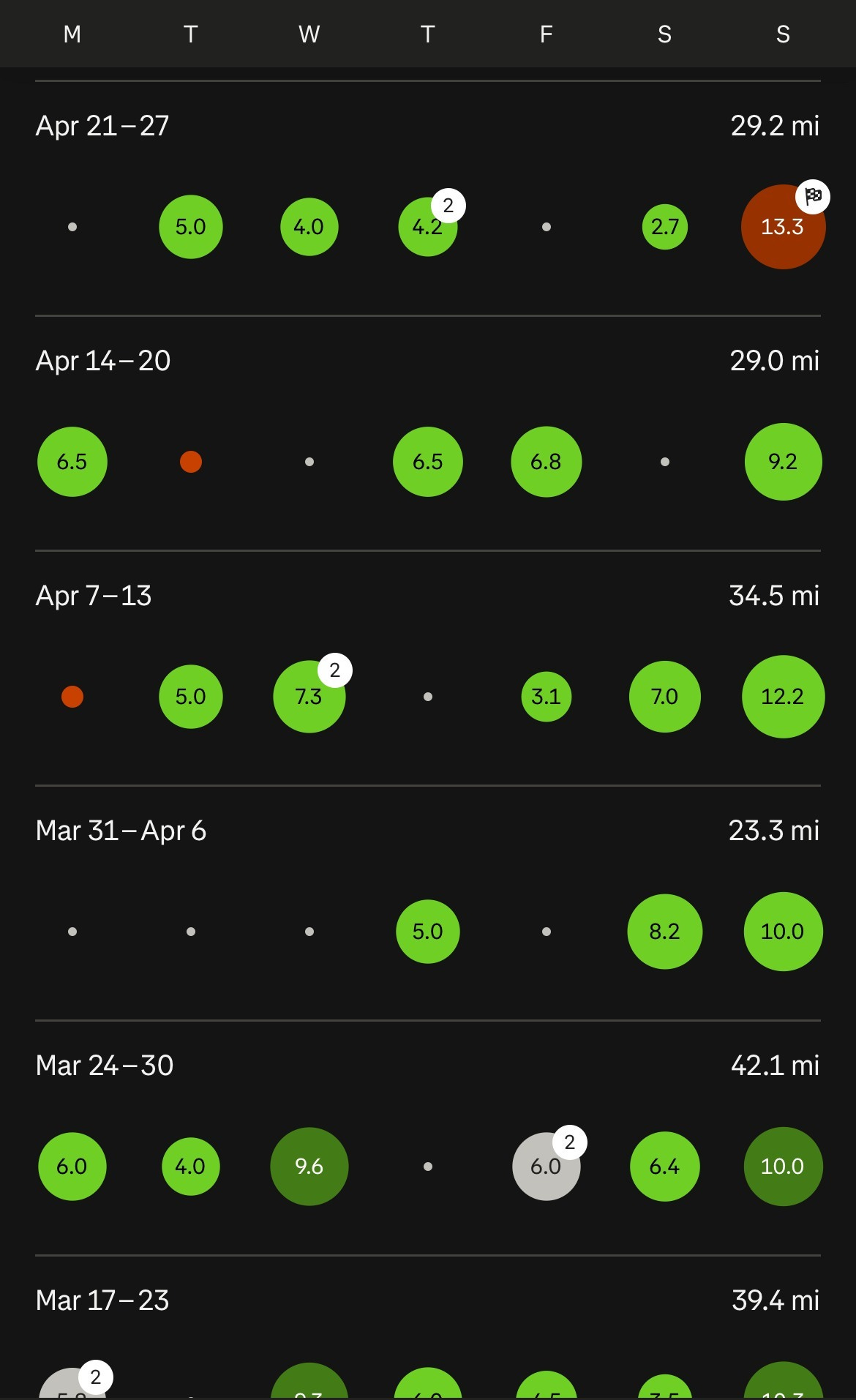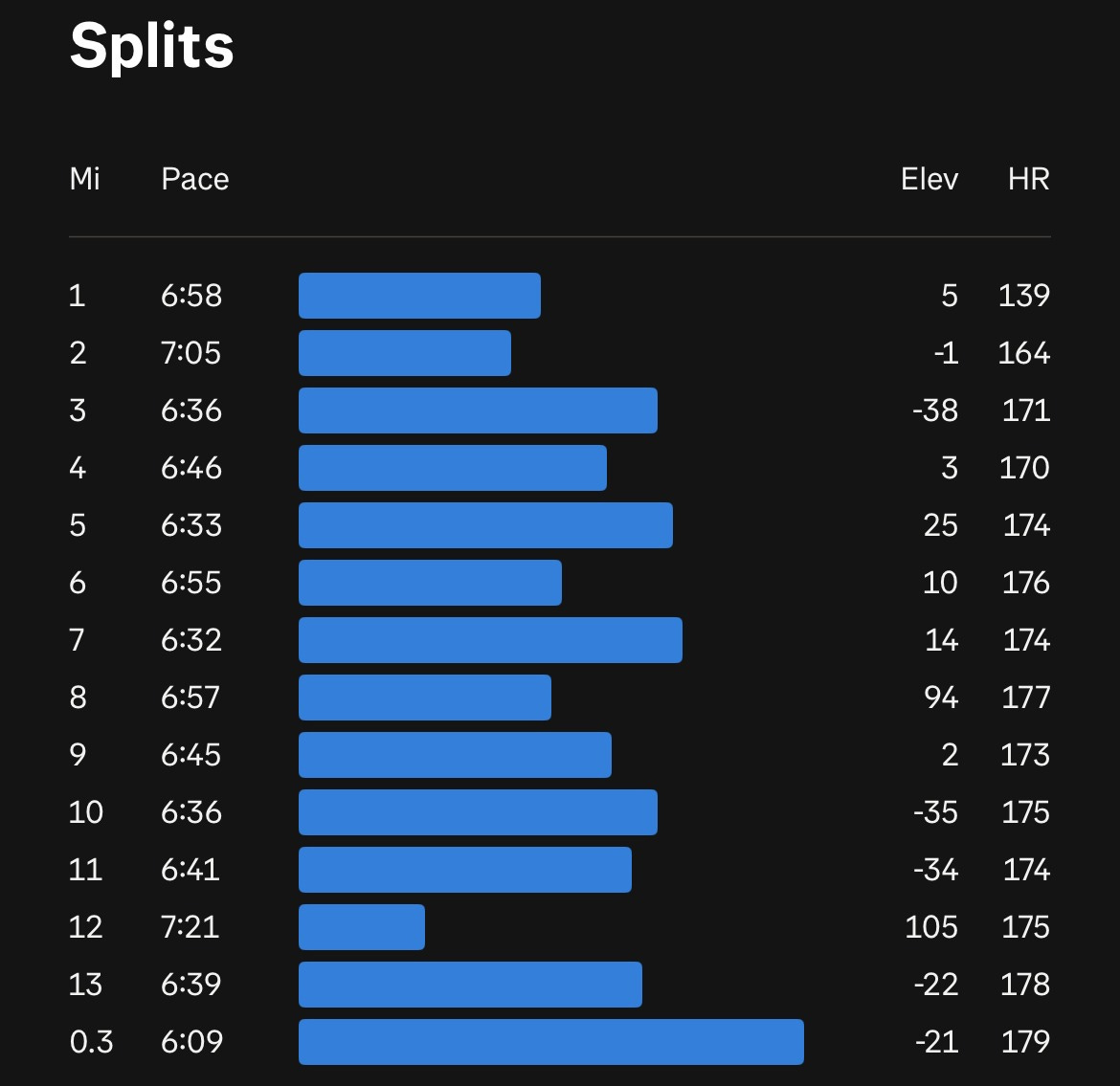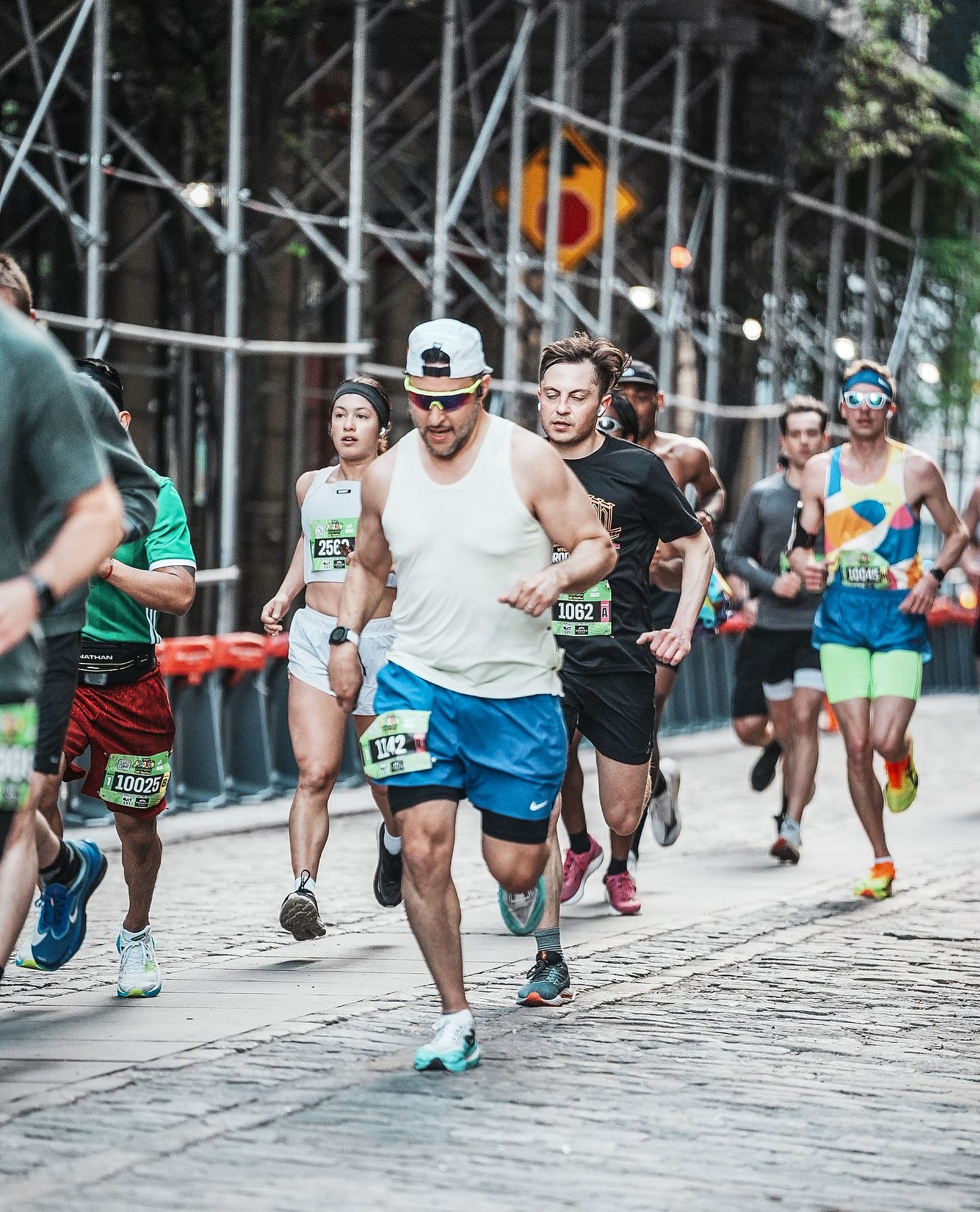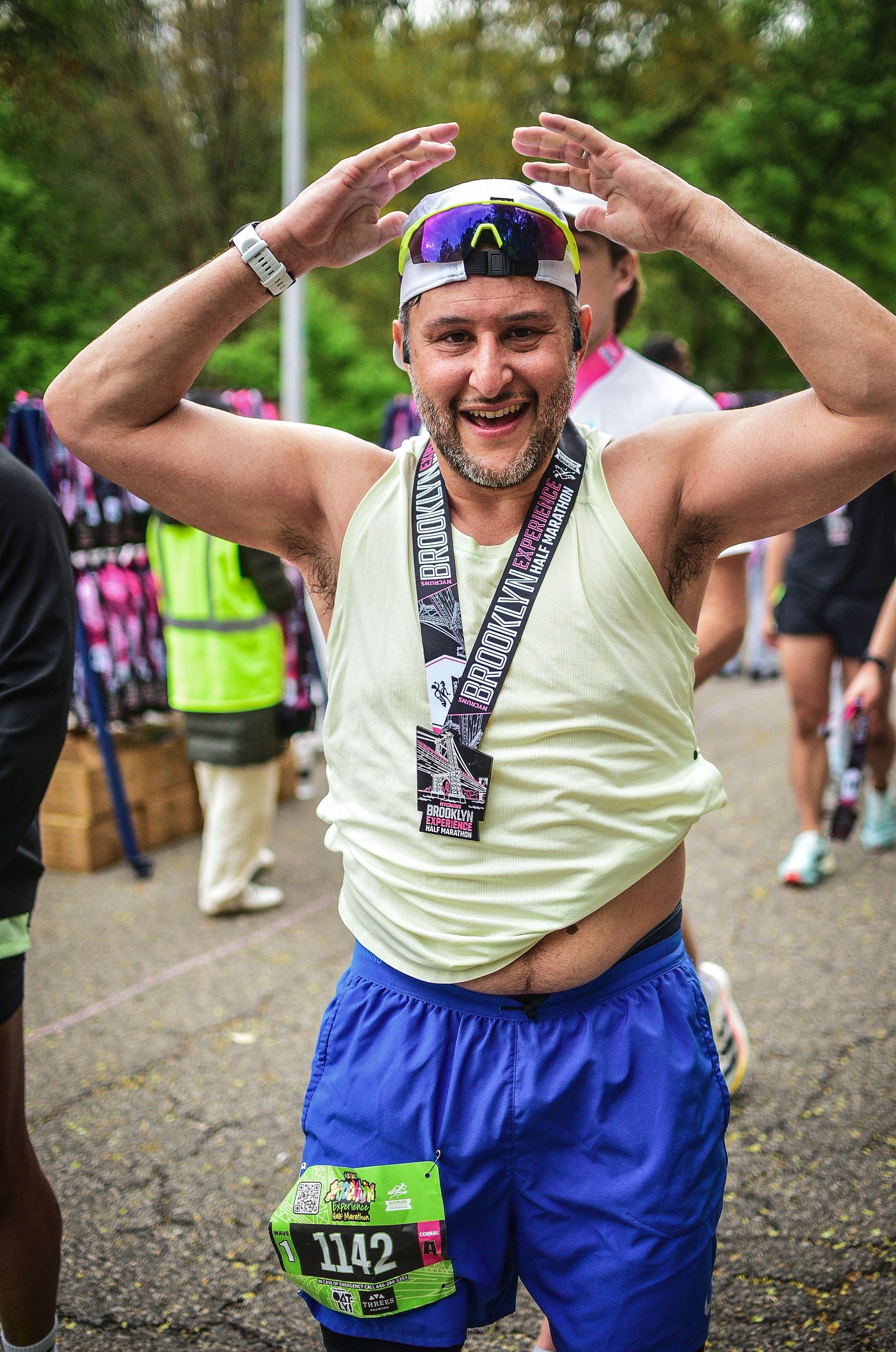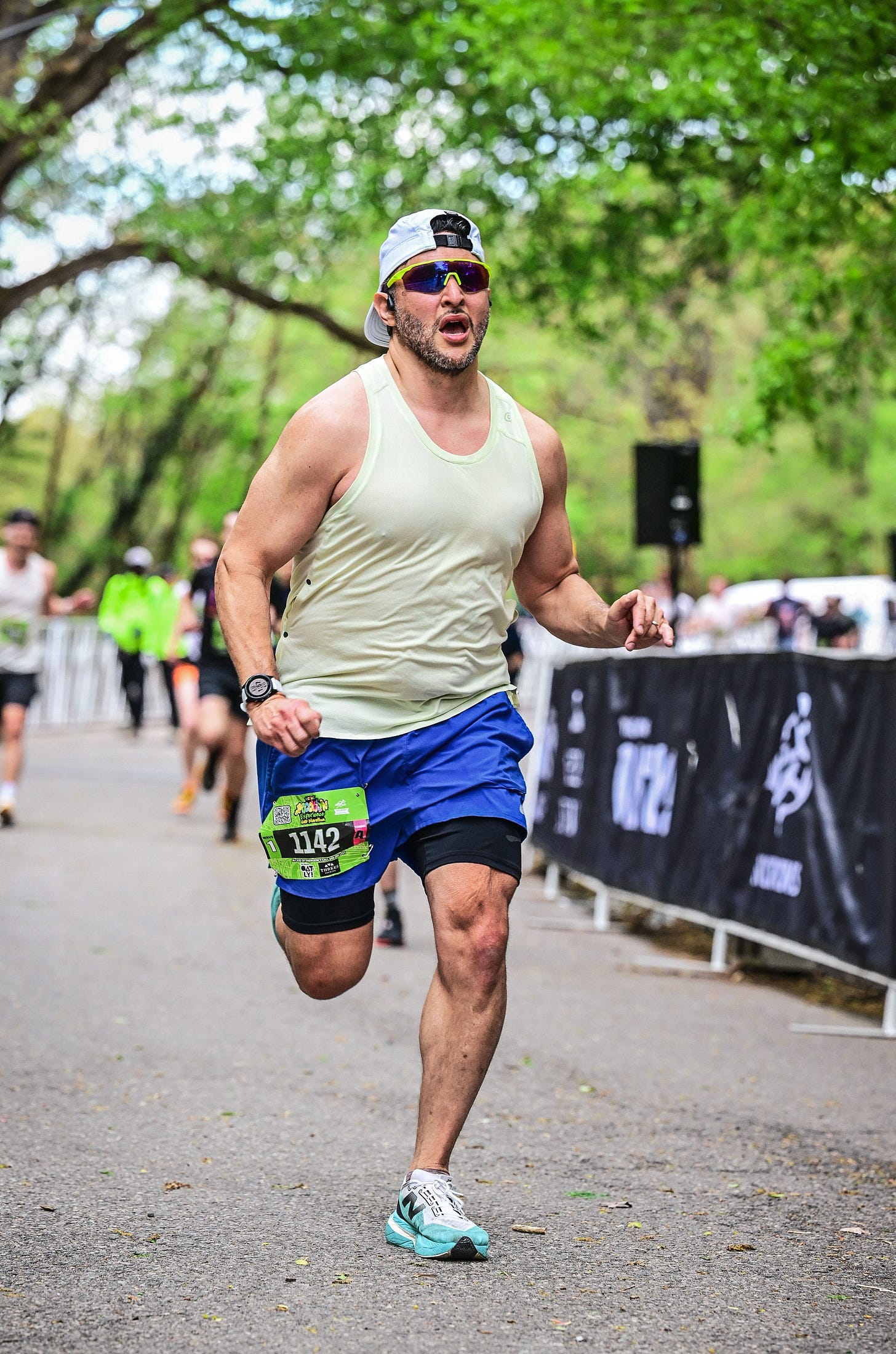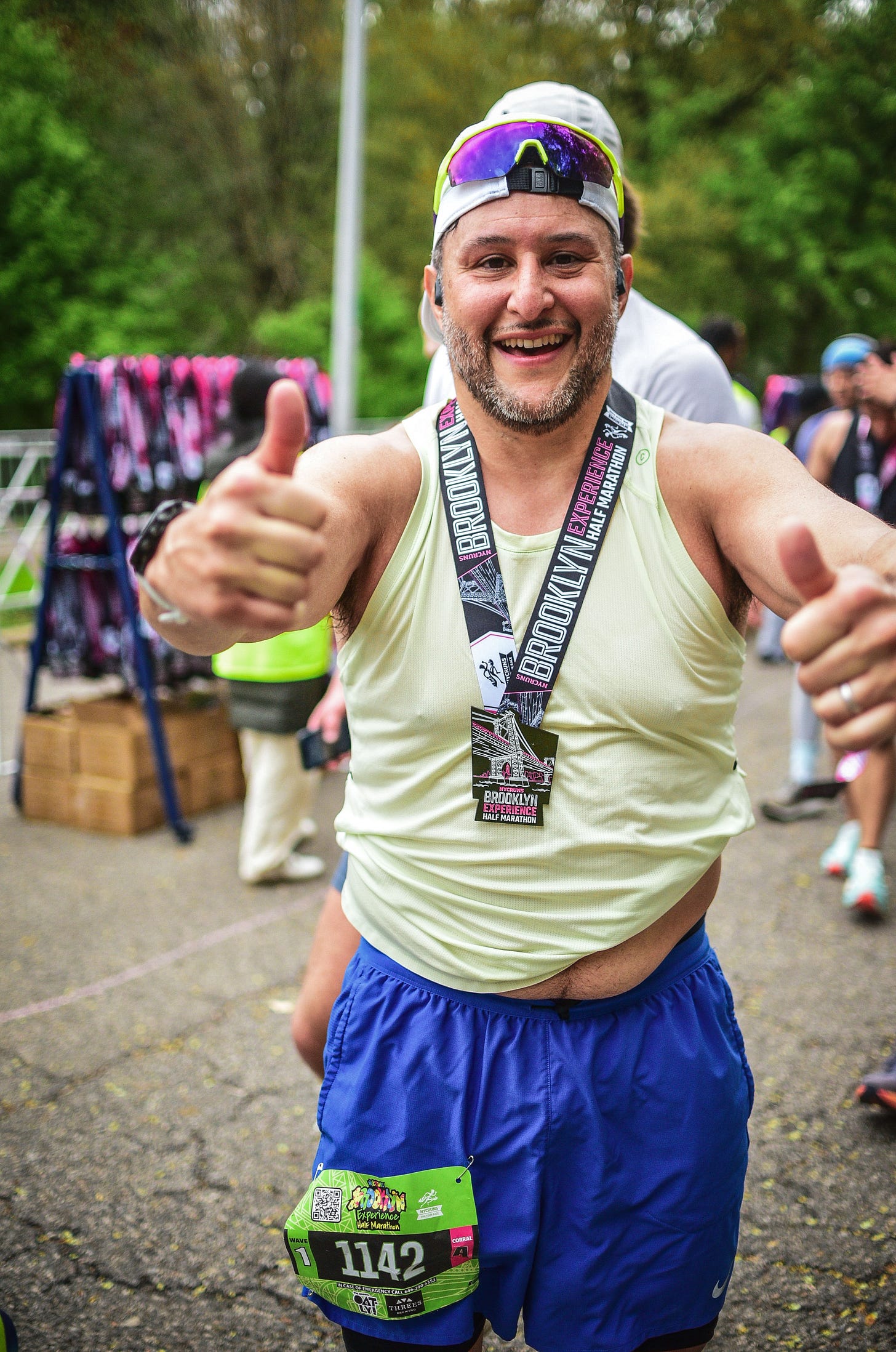Finding joy in the pain
Why friction is the clue that you're on the right track | Vol. 63
Good Morning MF/TS Readers - Welcome to volume 63!! 💫🙌🙏
Is intellectualism dead?
Advertising in the age of AI
Parker Posey is having a moment, and we’re here for it. 💃🏻👸🏻
This week’s MF/TS explores friction, pain, running, learning, and breakthrough.
After getting a new personal record in the Half marathon last week (1:30:25, 6:47/mile), I’ve been thinking about how the training program for the second time around lasted a little too long and ended up burning me out. But then, I started to wonder, what if getting a little worn out was the telling clue that a breakthrough was right around the corner?
CONNECTING DISPARATE DOTS
Embracing the pain
“If you feel that pain. Please keep that pain. The more you actually move with the pain that’s where success is. And the few who know how to actually handle the pain will know how to be successful. Pain is part of success, just convert pain into positive thing. Success does not come on a silver platter, you need to work for it. When you are working for it, that is undergo pain….at the end of it you will enjoy, the moment you cross the line, is the moment it is no longer there.” - Eliud Kipchoge, one of the best long distance runners of all time (Won Chiacago Marathon 5x in a row, two golds in the marathon, and only person to break the two-hour barrier running 26.2 miles)
Frustration tolerance = growth
“The issue for the screens, especially for young kids, is the screens are doing the work. The truth is to be kind of successful at independent play, the kids need to do the work. They have to be creative, they have to get stuck, they have to try things. They have to watch the block tower fall five times to get it right the sixth time. The most important skill that I like to teach my own kids, and like to teach parents to teach their children is this idea of frustration tolerance.” - Dr. Becky (P.S. If you’re a parent, bookmark these highlights from her interview with Kara Swisher, I took notes and you might want to as well) 🤗
Thoughts
While these two quotes are talking about two different things, they are actually describing something fascinatingly similar. The former is about the physical labor required to get to new heights in running (or any other athletic pursuit). The latter is talking about how do we help kids get their attention spans back? How do we help them break through to new learnings heights? Both deal with the acknowledgement of pain. And explain that it is within the confines of friction is where the potential growth sits.
EXHAUSTION TO ENLIGHTENMENT
Do I even want to do this anymore? That is the voice that would enter my inner thoughts.
After going out for weeks on end, putting anywhere between 33 - 44 miles a week, waking up at 5am, and running 5-6 times per week. And at times, fitting in weight room sessions. My mind and my body were like WTF are we doing?
Yet, I knew by asking the question that this likely meant I’ve crossed into the vortex. We had entered the gritty end of the training months. The pursuit is no longer about the push for speed and improvement, but is then a pursuit of sustainment. If I am able to just knuckle down and get through it despite the exhaustion, then we might be able to run the best Half-Marathon of my life.
UNLOCKING NEW MAGIC
In this training cycle, two changes stuck out. One, my Half-Marathon Pace (HMP) last year, coming off the LA Marathon, was 7:15 - 7:25/mile. Suddenly, I started running 6:40 - 6:55 mile times back-to-back comfortably. And also suddenly, my v02 Max jumped 4+ points to 54. This training cycle had me running to a different beat.
In those final few weeks leading into the race. I was indeed over it. I was over the runs, the diet/nutrition plan, the need for great sleep all the time, and the need to be scheduling my runs however I can. All that was left was time to mentally prepare and map out my racing strategy.
RACE PLAN VS. RACE ACTUALITY
I wanted to follow the same version of the Half-Marathon strategy I ran a year ago in Brooklyn. The NYRR route that goes from Prospect to Coney Island. I essentially started a 7:30/mile for the first 7 miles, then downshifted to 7:20/mile or less for the rest of the race (running 1:38:30). A good race that got me a good time, hitting a 4-minute year-over-year improvement in this race.
This new course went from Williamsburg to Park Slope, in wanting to co-adopt the same strategy, my goals was to lean into 7:10/7:05/mile times for three miles. Then, I unleashed some giddy up at mile 4 because I knew I wouldn’t be able to stop myself from vibing with the wolfpack.
RACE ACTUALITY
The weather was perfect. 50 degrees with a cool breeze running through town. Mile 1 hit, I ran a 6:58. I was happy, and it felt good. By mile 2, I caught a pace squad and followed them. By mile 4 I turned a corner into Dumbo and I was feeling this race hitting a 6:43 mile time. From there, I ran the rest of the race off of feeling. I was looking for that spot where I ran fast but I never got too tight or overwhelmed.
The big goal? Have enough gas in the tank to be able to hustle to the finish line once I hit mile 8. And sure enough, at 6:45, 6:36, 6:41 times heading into Prospect Park, we were in a groove. Those are the miles all the training is for. That’s where the pain pays off. It’s at the moment where your mind tells the body to push through it when the body doesn’t want to do it anymore. And my body responded positively. Then I met the hill at mile 11 and I lost time there. :(
SEEING NEW RECORDS
When I crossed the finish line, the watch spelled out a 1:30:25, I knew it’d be close to 90 minutes based on the times I saw running. Upon seeing the time I was pulsing with a happy frustration. I was slightly bummed I was that close but didn’t break 90:00 minutes (damn you mile 11!) but I was thrilled that I was that close to breaking 90:00 minutes in the Half-Marathon. The training (and the pain) had paid off.
FINDING POSITIVITY IN THE STRUGGLE
In recent days, as I’ve been thinking about this race. I’ve thought about Kipchogee’s quote on embracing the pain and knowing that positive sits in there. Also, Dr. Becky’s wisdom on teaching how to push through frustration is the richest learning exercise, especially for young people in a screen-saturated culture.
I know these are two separate things, but I think they’re talking about the same thing. I wonder if it’s hard to celebrate the magical benefits of focused friction in a society that tells you to be happy all the time by scrolling through a screen and sitting on a couch.
Yes, I am over-generalizing, but I rarely, if ever, hear Americans preach about the importance of pain. The importance of frustration. And the real magic in this life, is within that space and is mastering your own emotions within that space.
Running and learning are similar in both of those ways if you learn to be patient with the friction. To work through it. Go fast. Go slow. Take notes. Then, after a long time with the pain, a new, lighter feeling comes along. A feeling of knowing. A feeling of clarity. A feeling of knowing, here is where new breakthroughs can occur.
Perhaps we should encourage more focused struggles in pursuit of mastery. A focused practice. Maybe when we can go beyond our most basic instincts, and give ourselves a chance to reach through to the other side, we can discover something new.
VIBES OF THE WEEK
Go forth.
Stay safe.
Ride the wave.
-Mitch



